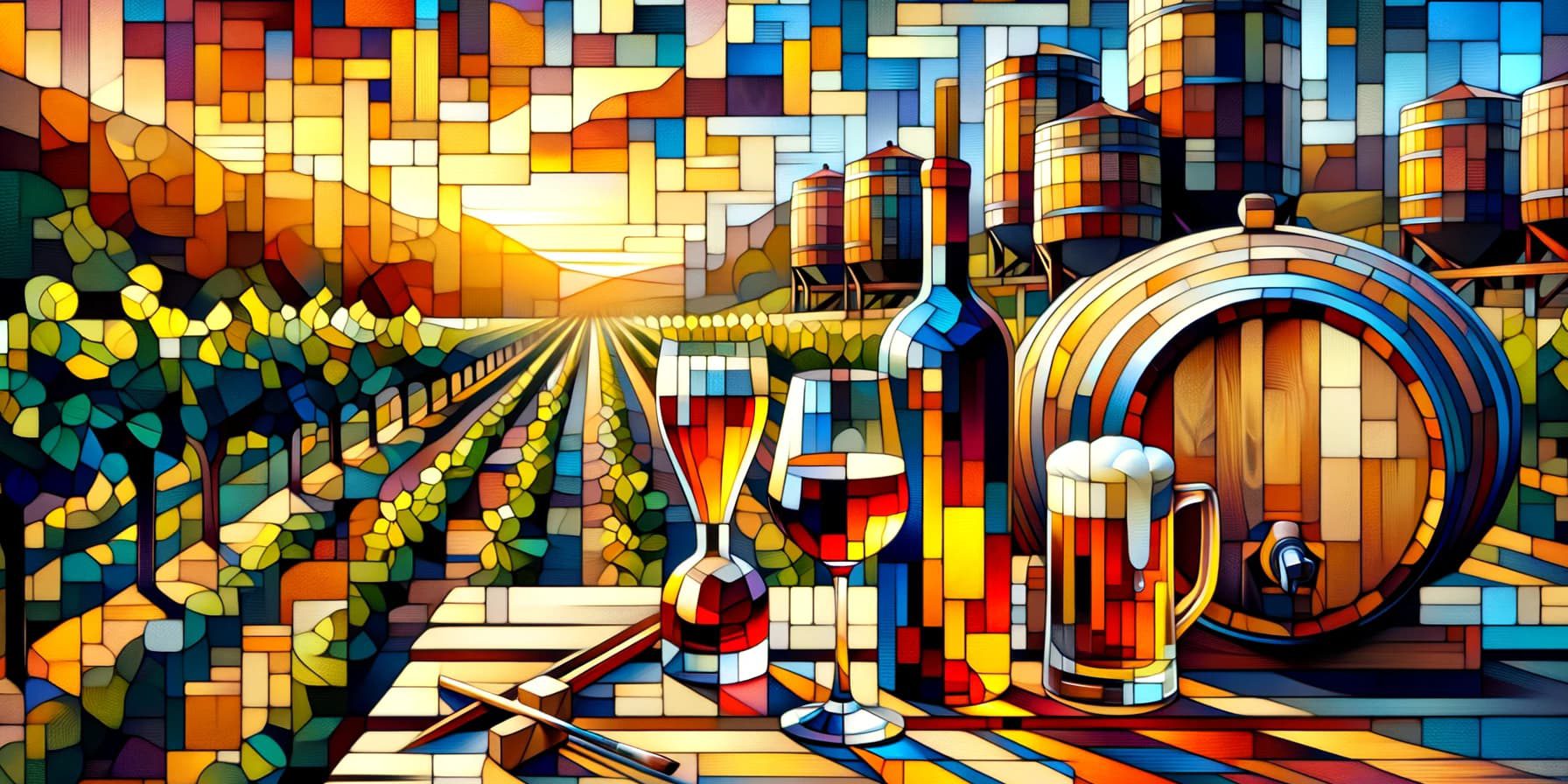Blending is indeed a fascinating aspect of both winemaking, brewing and whisky blending, where the craft lies in combining different batches to achieve a final product with specific characteristics. Here’s a closer look at blending techniques, along with examples from notable wineries, breweries and distilleries.
Winemaking:
Winemaking has a long history of blending different parcels of wine together, from simple options like different vineyards from the same vintage, to many different varieties to grapes to make complex high quality wines.
- Bordeaux Blends:
A blend that follows the tradition of the Bordeaux region in France, typically combining Cabernet Sauvignon, Merlot, Cabernet Franc, Petit Verdot, and Malbec. Each grape contributes distinct qualities, resulting in a well-balanced wine with structured tannins and complex flavours. Château Margaux, one of the premier Bordeaux estates, is known for its meticulous blending of Cabernet Sauvignon, Merlot, Cabernet Franc, and Petit Verdot. This allows them to create wines with a harmonious balance of structure, fruitiness, and complexity.
- Rhône Blends:
Inspired by the Rhône Valley in France, this blend often includes Grenache, Syrah, and Mourvèdre (GSM). Grenache adds fruitiness, Syrah brings spice and structure, and Mourvèdre contributes depth and earthiness. Château de Beaucastel in the Châteauneuf-du-Pape region blends several grape varieties, including Grenache, Syrah, and Mourvèdre. Their blending approach results in rich, full-bodied wines with layers of flavours.
3. Meritage Blend:
A term used for Bordeaux-style blends produced in the United States. It may include any combination of the classic Bordeaux varietals but excludes other grape varieties. The name “Meritage” is a combination of “merit” and “heritage.” Opus One in Napa Valley often creates Meritage blends.
- New World Blends:
Penfolds, an Australian winery, is renowned for its Grange blend, incorporating predominantly Shiraz with a touch of Cabernet Sauvignon. The artful blending creates a wine with both power and finesse.
Brewing:
Blending in beer making is a lot less common than other products like wine and whisky, nevertheless there are brewers doing some very interesting things using blending as a tool.
- Barrel-Aged Blends:
A blend of beers that have been individually aged in barrels, often oak barrels, to impart specific flavours and aromas. The final blend is crafted to achieve a balanced and complex beer with nuances from the ageing process. Founders Brewing Company’s Kentucky Breakfast Stout is a blend of different barrel-aged stouts, including those aged in bourbon barrels. The combination imparts complex flavours of chocolate, coffee, and bourbon, creating a sought-after brew.
- Sour Beer Blends:
Sour beer blends involve combining different batches of sour ales, often fermented with wild yeast strains or bacteria. The goal is to achieve a balanced and tangy beer with layers of complexity. Russian River Brewing company’s “Supplication” is a blend of sour ales aged in Pinot Noir barrels with sour cherries. The careful blending of different aged batches results in a beer with a delightful interplay of tartness and fruitiness.
- IPA Blends:
Blending different batches of India Pale Ales (IPAs) to create a beer with a diverse hop profile. This may involve combining beers with different hop varieties, flavours, and aromas. Dogfish Head Craft Brewery is known for blending multiple IPA batches to create unique and experimental brews. Their “Blindfold” IPA, for instance, blends citrusy and tropical hop-forward beers with more resinous and piney ones, achieving a diverse flavour profile.
Whisky blending:
Distilleries have a long history of blending to make whisky. There are some interesting distinctions between what gets labelled as “blended” compared with blending that actually occurs to make a whisky, even a Single Malt Whisky.
- Single Malt Whisky:
Produced from 100% malted barley at a single distillery. It is not blended with whiskies from other distilleries. Glenfiddich, Glenlivet, Ardbeg are one of the more popular Single Malts.
- Blended Scotch Whisky:
A blend of single malt and grain whiskies from different distilleries. Blended Scotch aims to achieve a balanced and consistent flavour. Johnnie Walker, Chivas Regal, Dewar’s are great examples of Blended Scotch.
- Single Grain Whiskey:
Produced at a single distillery but can include a mix of grains other than malted barley, such as corn or wheat. To try one of these, visit Greenore.
- Blended Grain Whisky:
A blend of grain whiskies from different distilleries. Similar to blended Scotch but focusing on grain whiskies. Go ahead and try Hedonism by Compass Box.
- Bourbon Blending:
Bourbons are primarily made from corn and aged in new charred oak barrels. Blending can involve combining different batches or barrels to achieve a desired flavour. Good examples are Maker’s Mark, Buffalo Trace, Four Roses.
- Rye Whiskey Blending:
Rye whiskey is made primarily from rye grain. Blending can occur to create a harmonious and balanced flavour. WhistlePig, Bulleit Rye, Knob Creek Rye are some good examples of Rye Whiskey.
Key Blending Techniques:
Trial and Error:
Both winemakers, distillers and brewers often conduct small-scale trials before finalising a blend, adjusting ratios to achieve the desired flavour profile.
Component Analysis:
Understanding the individual characteristics of each component (wine, whiskey or beer) is crucial to crafting a balanced blend. Analysing aromas, flavours, and mouthfeel guides the blending process.
Consistency in Production:
Maintaining consistency in individual batches ensures that the final blend reflects the intended characteristics. This consistency is often achieved through rigorous quality control measures.
Artistic Expression:
Blending is an art, and the intuition and experience of the winemaker, distiller or brewer play a significant role. It’s about crafting a final product that is greater than the sum of its parts.
Blending is a dynamic process that requires a delicate balance between science and creativity. The examples provided showcase how wineries, distilleries and breweries use blending to create distinctive and memorable products that stand out in the market.






